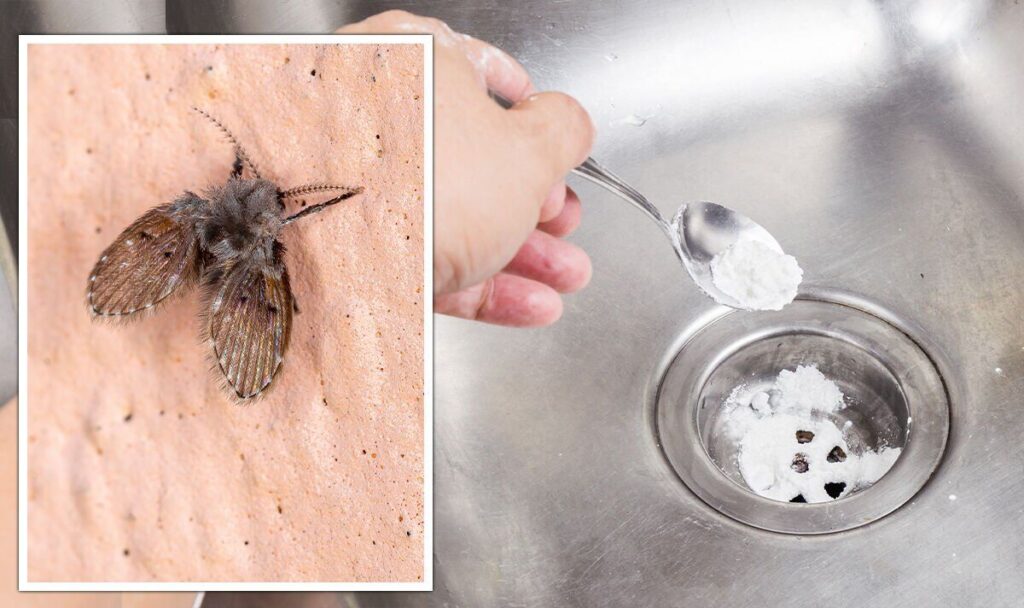How to Get Rid of Drain Flies: A Comprehensive Guide
Drain flies, also known as moth flies or filter flies, are small insects that thrive in moist, organic-rich environments like drains, pipes, and sewers. These pesky creatures can quickly become a nuisance in your home, with the ability to reproduce rapidly and spread bacteria. However, there are several effective methods to eliminate drain flies and prevent future infestations. In this comprehensive guide, we’ll explore various techniques, from natural remedies to professional extermination, to help you reclaim your home from these unwelcome guests.
1. Understanding Drain Flies
Drain flies are tiny, grayish-brown insects with fuzzy bodies and wings. They measure approximately 1/4 to 1/2 inch in length and are often mistaken for moths due to their appearance and behavior. These flies are attracted to the moist, nutrient-rich environment found in drains, where they feed on the organic matter and lay their eggs.
2. Identifying the Source of the Infestation
The first step in getting rid of drain flies is to identify the source of the infestation. Drain flies typically breed in the slime and organic matter that accumulate in drains, pipes, and other moist areas. Look for signs of drain fly activity, such as small, dark specks on the walls near the drain or the presence of adult flies.
3. Natural Remedies for Drain Fly Elimination
Before resorting to chemical solutions, try these natural methods to get rid of drain flies:
3.1 Boiling Water
Pouring boiling water down the affected drain can help kill drain fly larvae and eggs. Bring a pot of water to a boil and carefully pour it down the drain, focusing on the areas where the flies are most active. Repeat this process once or twice a day for several days to ensure the flies are eliminated.
3.2 Baking Soda and Vinegar
Create a natural drain cleaner by mixing 1/2 cup of baking soda with 1/2 cup of salt and 1 cup of white vinegar. Pour the mixture down the drain, followed by a pot of boiling water. Let it sit overnight, then flush the drain with hot water in the morning. The chemical reaction between the baking soda and vinegar helps break down organic matter and kill drain fly larvae.
3.3 Enzyme Cleaners
Enzyme cleaners are designed to break down organic matter, making them effective against drain fly infestations. Look for enzyme-based drain cleaners at your local hardware store or online and follow the instructions on the label for best results.
4. Chemical Solutions for Stubborn Infestations
If natural remedies fail to eliminate the drain flies, consider using chemical solutions:
4.1 Drain Cleaners
Commercial drain cleaners, such as Drano or Liquid-Plumr, can help clear out clogs and remove organic buildup in pipes. These products typically contain harsh chemicals that can kill drain fly larvae and eggs. Always follow the instructions on the label and ensure proper ventilation when using these products.
4.2 Insecticides
As a last resort, you may need to use an insecticide specifically designed for drain flies. Look for products containing pyrethrins or permethrin and apply them directly to the affected drain according to the manufacturer’s instructions. Keep in mind that insecticides can be harmful if misused, so exercise caution and avoid contact with skin or eyes.
5. Preventive Measures
To prevent future drain fly infestations, implement these preventive measures:
5.1 Regular Cleaning
Regularly clean your drains to remove any organic buildup that can attract drain flies. Use a pipe brush or drain snake to scrub the inside of the pipes, and flush the drain with hot water. Consider scheduling a professional plumber to clean your drains if you have a severe or recurring problem.
5.2 Eliminate Standing Water
Fix any leaks or moisture issues in your home to eliminate potential breeding grounds for drain flies. Ensure that all drains are properly sealed and that there is no standing water in sinks, tubs, or other areas.
5.3 Use Drain Covers
Cover your drains when not in use to prevent adult drain flies from entering and laying eggs. You can purchase drain covers or create your own using mesh screens or aluminum foil.
6. When to Seek Professional Help
If the drain fly infestation persists despite your efforts, it may be time to call in a professional exterminator. Pest control experts have access to more potent insecticides and can identify and address the root cause of the problem. They may also recommend additional measures, such as sealing cracks and crevices or treating the entire plumbing system.
7. Frequently Asked Questions (FAQ)
How do I know if I have a drain fly infestation?
Signs of a drain fly infestation include the presence of small, fuzzy flies near drains, sinks, or other moist areas, as well as small, dark specks on walls or surfaces near the affected drain.
Can drain flies spread diseases?
While drain flies are not known to spread diseases directly, they can potentially carry bacteria and contaminate food preparation surfaces.
How long does it take to get rid of drain flies?
The time it takes to eliminate a drain fly infestation can vary depending on the severity of the problem and the methods used. With consistent treatment and preventive measures, most infestations can be resolved within a week or two.
Can drain flies infest other areas of my home besides drains?
Drain flies are primarily attracted to moist, organic-rich environments like drains and pipes. However, they can occasionally be found in other areas with high humidity or moisture, such as bathrooms or basements.
How can I prevent future drain fly infestations?
To prevent future drain fly infestations, maintain good hygiene by regularly cleaning drains, fixing leaks, and eliminating standing water. Use drain covers when not in use and consider installing a mesh screen over your drains to prevent adult flies from entering.
8. Conclusion
Drain flies can be a persistent and frustrating problem, but with the right approach, you can effectively eliminate them and prevent future infestations. Start with natural remedies like boiling water or baking soda and vinegar, and if necessary, progress to chemical solutions or professional extermination. Remember to maintain good hygiene and address any moisture issues in your home to keep drain flies at bay. By following the steps outlined in this comprehensive guide, you can reclaim your home and enjoy a drain fly-free environment.
Relevant Information
| Topic | Link |
|---|---|
| Drain Flies | Wikipedia article on Drain Flies |



